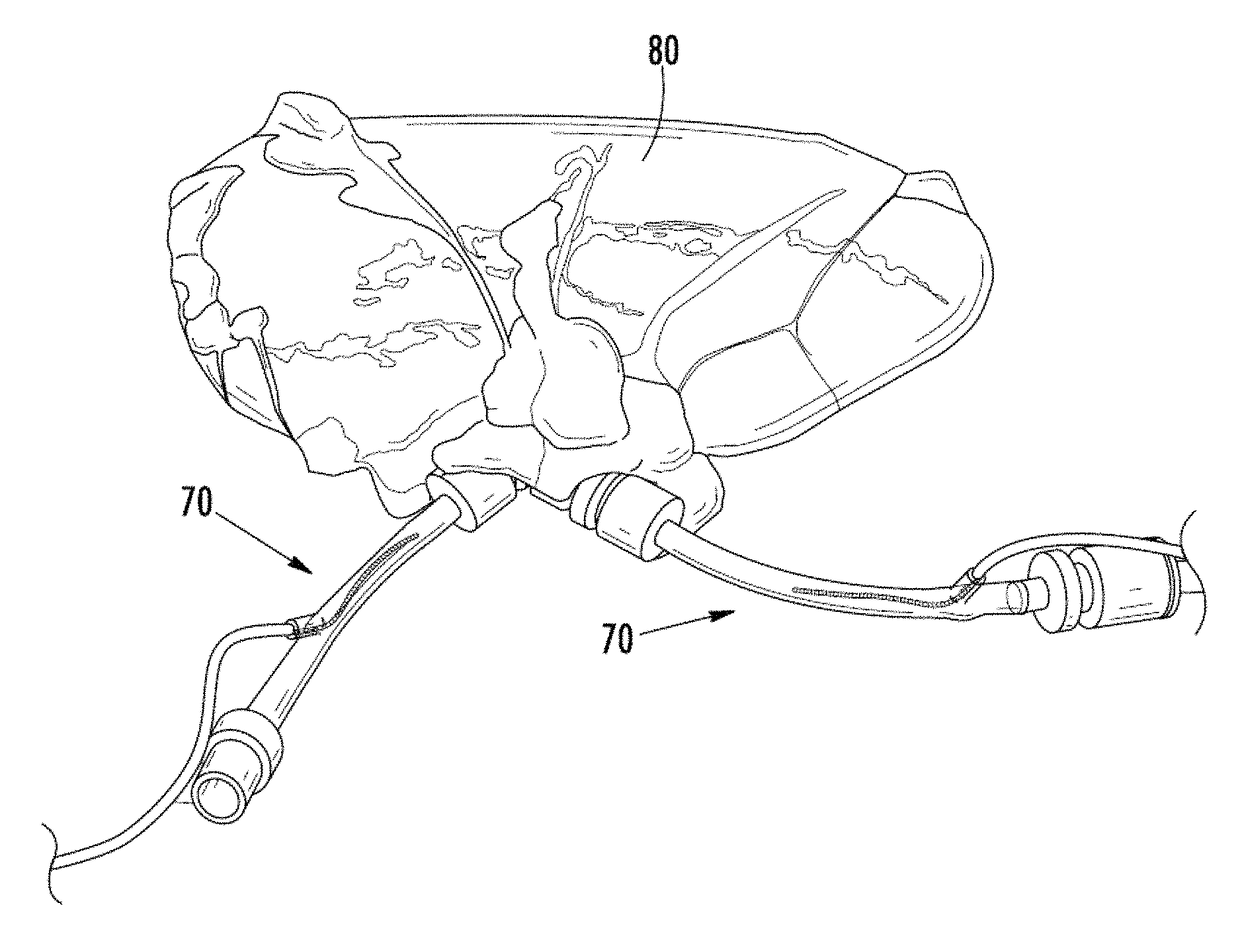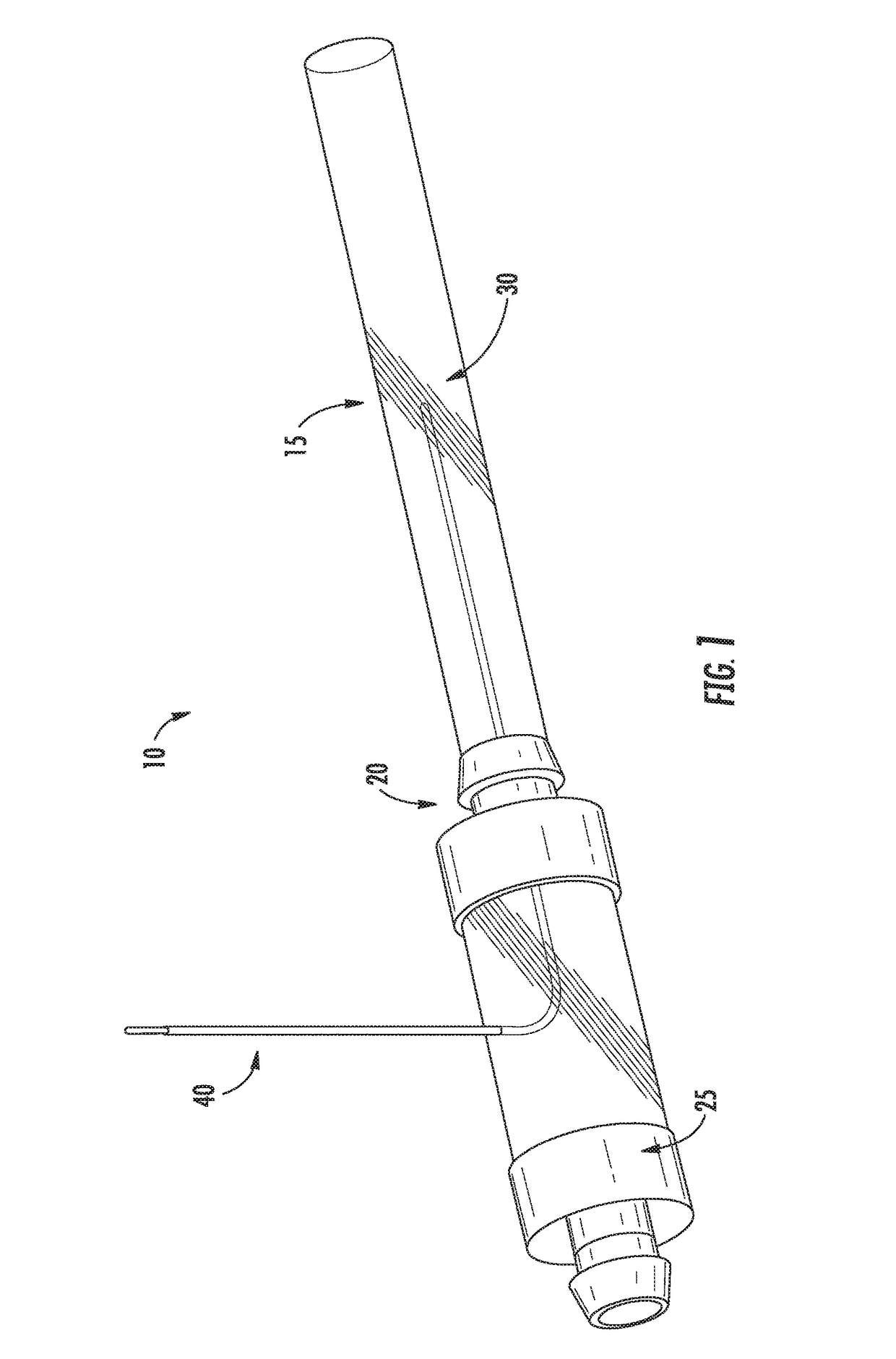Irreversible electroporation using tissue vasculature to treat aberrant cell masses or create tissue scaffolds
a tissue vasculature and electroporation technology, applied in the field of medical treatment of diseases and disorders, can solve the problems of difficult surgical intervention on tumors that are not readily accessible or on organs that do not regenerate, surgical intervention can often involve substantial physical damage to the patient, and no one technique has been shown to be highly effective at treating all types of cell proliferative diseases and disorders, etc., to achieve the effect of improving the preservation of extracellular matrix, reducing energy needed, and increasing cell permeability
- Summary
- Abstract
- Description
- Claims
- Application Information
AI Technical Summary
Benefits of technology
Problems solved by technology
Method used
Image
Examples
example i
ics Modeling
[0109]Preliminary multiphysics modeling was conducted to establish the feasibility of using the vascular system as a pathway for electrical pulse delivery. The electric field distribution, which is the key factor for the development of pores (reversible or irreversible) in the cell membrane, was modeled using a finite element method. Three liver tissue models were developed representing the liver structure with different levels of detail. The Comsol Multiphysics was used to solve for the electric potential (φ) which obeys the Laplace Equation:
∇·(σ∇φ)=0
[0110]where σ is the electrical conductivity.
[0111]Model 1:
[0112]Initially, the liver was modeled as a 2 cm thick homogenous structure with 1 cm diameter plate electrodes on either side of the tissue. This model was used to correlate experimental lesions to electric field intensities. A single 10 microsecond 1500 V / cm pulse was delivered to the top electrode while the bottom electrode was grounded. As shown in FIG. 2, the r...
example ii
Active Perfusion
[0142]Young mixed breed pigs were sacrificed by way of barbiturate overdose. Livers were harvested and placed on ice within 15 minutes of death. Vascular anastomosis with the perfusion system was created by inserting Luer lock syringe connections into the portal vein, hepatic artery, and major hepatic vein, which were then secured with zip ties. The livers were flushed with lactated Ringer's solution (LRS) to remove blood / clots before placement on the perfusion system.
[0143]The VasoWave™ Perfusion System (Smart Perfusion, Denver, N.C.) was used to perfuse the livers for 4 and 24 hours. This system produces a cardioemulating pulse wave to generate physiological systolic and diastolic pressures and flow rates within the organ. The system is capable of controlling the oxygen content of the perfusate above and below physiological norms. A perfusate, consisting of modified LRS, was delivered to the portal vein and hepatic artery and recycled back into the system through t...
example iii
Administered IRE with Active Perfusion
[0168]A normal kidney was procured, through standard and approved means, from a pig after death. When obtained, the renal artery and vein of the kidney were isolated and connected with fittings to allow anastomosis to a cardiovascular emulation system (CVES) (VasoWave 2.3™, Smart Perfusion LLC, Denver, N.C.). The organ was connected to the CVES and the kidney was flushed with 1.5 liters of Krebs-Hensleit / Glutathione physiologic solution over a period of 5 minutes.
[0169]The kidney was then anastomosed on the arterial and vascular connectors to the CVES and perfusion was started (arterial systolic pressure: 110 mm Hg, diastolic pressure 60 mm Hg, with a physiologic pulse train delivered at 60 beats per minute). Perfusion was performed at 25° C. The renal vein was left disconnected but the end of the tubing was elevated to generate a low backpressure (this approximated 1 mm Hg). Perfusion was stabilized over a 15 minute interval. The Krebs solution...
PUM
| Property | Measurement | Unit |
|---|---|---|
| thickness | aaaaa | aaaaa |
| distances | aaaaa | aaaaa |
| thickness | aaaaa | aaaaa |
Abstract
Description
Claims
Application Information
 Login to View More
Login to View More - R&D
- Intellectual Property
- Life Sciences
- Materials
- Tech Scout
- Unparalleled Data Quality
- Higher Quality Content
- 60% Fewer Hallucinations
Browse by: Latest US Patents, China's latest patents, Technical Efficacy Thesaurus, Application Domain, Technology Topic, Popular Technical Reports.
© 2025 PatSnap. All rights reserved.Legal|Privacy policy|Modern Slavery Act Transparency Statement|Sitemap|About US| Contact US: help@patsnap.com



